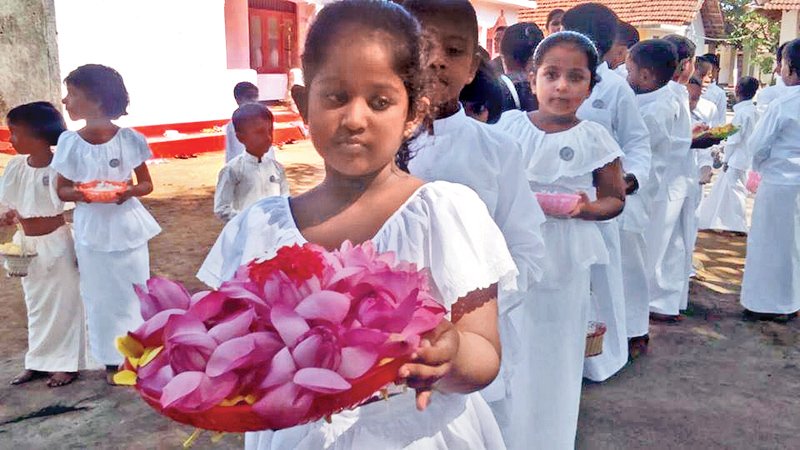Gathas are a significant aspect of worship in various Buddhist traditions, particularly in expressing reverence to the Lord Buddha. These verses not only serve as devotional chants but also encapsulate the essence of Buddhist teachings and philosophy. Through Gathas, practitioners can deepen their connection with the Buddha and cultivate mindfulness in their daily lives.

A Guide to Buddhist Devotional Practices
The practice of chanting Gathas allows individuals to reflect on the core principles of Buddhism, including compassion, wisdom, and the importance of living in harmony with oneself and others. By incorporating these verses into their spiritual routines, they promote a sense of peace and focus.
Exploring the history and significance of Gathas reveals their role in enriching spiritual practices. Readers can gain insights into how these verses can enhance their worship and understanding of Buddhism, fostering a more profound spiritual experience.
Origins of Gathas in Buddhist Practice

Gathas are poetic verses that serve as a means of expressing devotion in the Buddhist tradition. They hold a significant place in the worship and veneration of the Buddha.
The term “Gatha” is derived from the Sanskrit word gāthā, meaning “song” or “verse.” These verses often encapsulate key teachings and reflections on the nature of reality, emphasizing mindfulness and compassion.
Historically, Gathas have been used in various Buddhist rituals and ceremonies. They help practitioners focus their minds and cultivate an atmosphere of reverence.
Gathas may originate from ancient texts, including the Pali Canon and other scriptures. They have evolved through oral traditions and written forms, being adapted to various cultures.
Key aspects of Gathas include:
- Structure: Typically short and rhythmic, facilitating memorization.
- Themes: Relationship with the Buddha, impermanence, and ethical conduct.
- Function: Used in prayers, chanting, and meditation practices.
The use of Gathas connects practitioners with the core teachings of Buddhism, reinforcing their commitment to the path laid out by the Buddha. Thus, Gathas play a crucial role in the spiritual life of many Buddhists.
The Role of Gathas in Devotional Activities

Gathas serve a significant function in the devotional practices of Buddhism, enhancing various aspects of spiritual engagement. They promote mindfulness, facilitate concentration, and encourage compassion among practitioners.
Cultivating Mindfulness
Gathas are designed to anchor individuals in the present moment. Reciting these verses brings attention to thoughts, feelings, and actions in a mindful way.
By integrating Gathas into daily routines, a practitioner can transform mundane activities into opportunities for reflection. For example, a Gatha recited while washing hands can serve as a reminder to focus on the sensations and actions involved.
The repetitive nature of these verses reinforces awareness. This practice ultimately nurtures a deeper connection to the moment, allowing insights and clarity to emerge.
Facilitating Concentration
The rhythmic quality of Gathas aids in establishing a meditative state, enhancing concentration. As practitioners repeat these verses, they can quiet the chatter in their minds.
Gathas act as a focal point. This focus minimizes distractions and promotes a sense of inner peace.
Additionally, they can be used during meditation sessions to maintain attention. By continually bringing the mind back to these phrases, practitioners can deepen their meditative experience.
Encouraging Compassion
Gathas also play a vital role in fostering compassion. Many verses emphasize the importance of kindness and empathy towards oneself and others.
By focusing on compassion through Gathas, practitioners cultivate a sense of interconnectedness with all beings. This realization can lead to more compassionate actions in daily life.
Furthermore, shared recitation of Gathas within a community enhances empathy among participants. This collective effort strengthens bonds and encourages a supportive environment, crucial for communal spiritual growth.
Let’s Worship Lord Buddha
1. Let’s Worship Lord Buddha
2. Let’s Worship Dhamma
3. Let’s Worship Sangha
4. Worshipping Parents
5. Offering of Flowers
6. Offering of Light
7. Offering of Incense Sticks

image credit: Sri Kalyani Dhamma School Offering of Flowers
1. Let’s Worship Lord Buddha
Iti Pi So Bhagava – Arahan – Samma Sambuddho
Vijjacharana Sampanno – Sugato – Lokavidu
Anuththaro Purisadhamma Sarathi
Sattha Deva Manussanam – Buddho Bhagavati
2. Let’s Worship Dhamma
Svakkhato Bhagavata Dhammo
Sanditthiko – Akaliko
Ehi Passiko – Opanayiko
Pachchattam Veditabbo Vinnuhiti
The teachings of the Bhagavad Dhammo are characterized by their formal tone and timeless nature. They are described as Svakkhato, meaning well-expounded, Sanditthiko, meaning evident here and now, and Akaliko, meaning timeless.
Read About – Let’s go to Dhamma School







Leave a Comment